Project Meetings: An Easy-To-Follow Checklist That Will Save You Time
Be prepared for the next project status meeting with your client: this easy project meeting checklist will save you time.

As COVID-19 has accelerated the adoption of remote work across many industries, companies have had to move to telework fast. Some even start their business during the pandemic, while adopting a remote-first culture from day one.
One of the key tasks that leaders have to perform in 2021 and beyond is empowering employees in their remote workplaces and equipping them with the tools they need to be more effective when no longer working from an office.
While new things do not always come easy, it has turned out that a big number of industries could introduce remote work with little to no effort after the need had appeared.
According to the Slack report, most business sectors could do remote work with little or no difficulty (see a graph below). 78% of employees who have switched to remote work are able to work from home, at least one day a week.
However, usually, employees performing telework felt unprepared in terms of tools and technology.
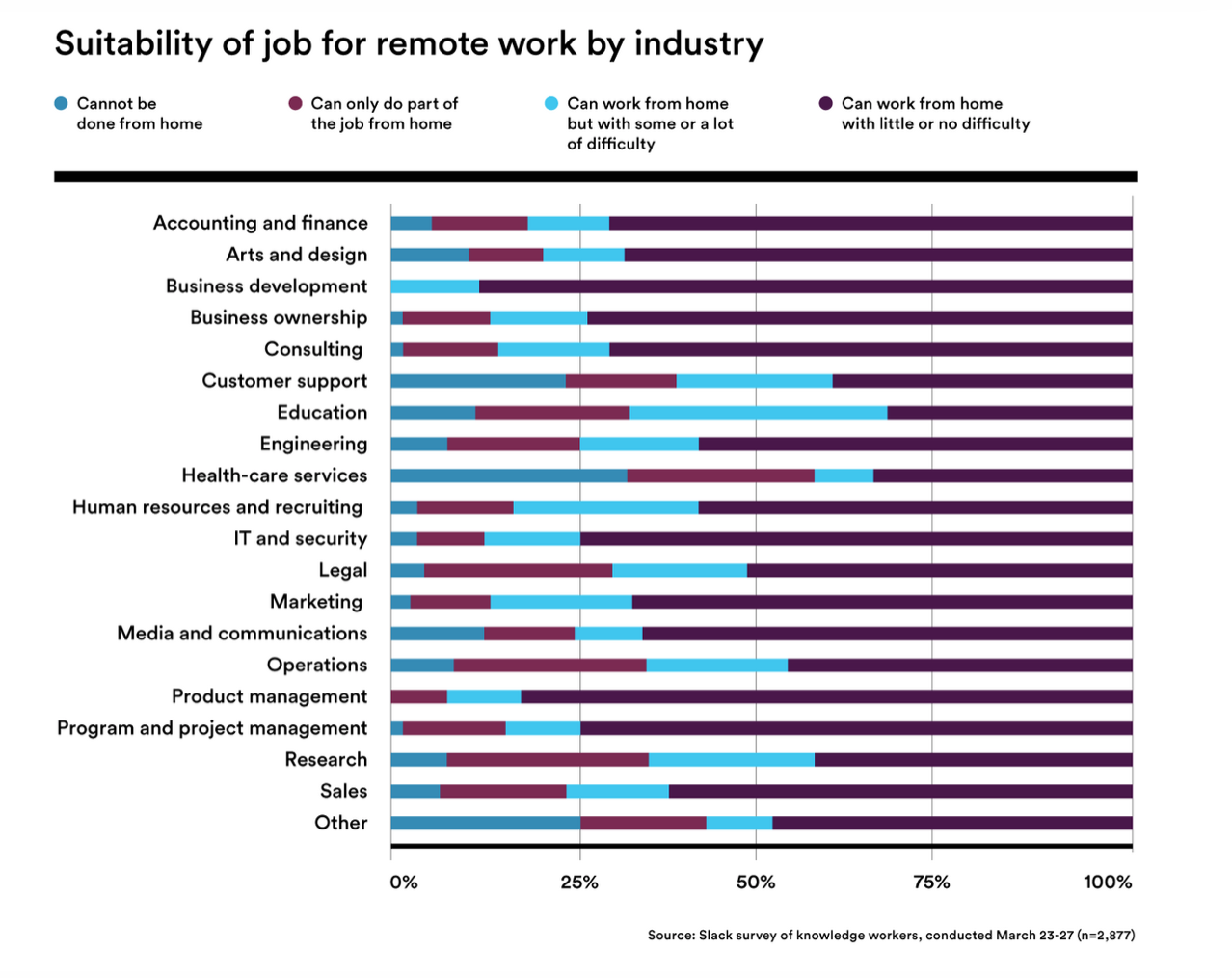
Source: Slack
While it seems that many companies will keep remote work schedules after the pandemic, leaders have to use new management strategies to facilitate their teams’ remote collaboration and ensure the integrity of a distributed workforce.
In this article, you will learn about a few strategies that can come in handy in 2021 and later. Are you going to recruit and work with remote or hybrid teams at the beginning of 2021 and beyond? Then these are the strategies you should start applying today!
Online communicators can be disturbing at times – multiple messages swamping the company channels can distract people from their priority tasks. As a result, a lower attention span causes drops in your team’s productivity, reducing the phases of deep work.
Instead of expecting an instant response to messages from your colleagues, let them take their time to come back to the questions and new tasks when they have dealt with their previous assignments.
Consider implementing asynchronous communication and let people respond within the next 24h, not 2 minutes. While getting people focused on their work, you will notice they will declare their stress levels to decline and manage to do more during the day.
However, not all teams composed of “makers” and “managers” can find asynchronous communication as a perfect way to go along with their work every day. The main reason for the criticism of this approach is that asynchronous communication usually creates blockers.
Imagine a graphic designer has a request on a new project module and needs to get a quick answer from their manager. As their next actions depend on the manager’s response, they can’t move with their tasks until their manager responds.
If your team consists mainly of makers, you should consider incorporating asynchronous communication for your makers while staying available for your team. Managers usually switch between tasks and online meetings a lot – that is why deep work is not always common for leaders. On the other hand, for makers, deep work is especially important as they need to focus on specific tasks and perform them with precision.
As your main role as a leader is not to do all the work, but ensure your team has no friction in communication and blockers to achieve their goal, you should be there for them whenever they need your approval or consultation. In the meantime, you should leave more freedom to the makers to respond to your messages after their next deep work cycle.
Here is what the maker’s day looks like with the mix of asynchronous and synchronous communication – fewer distractions and more deep work phases.
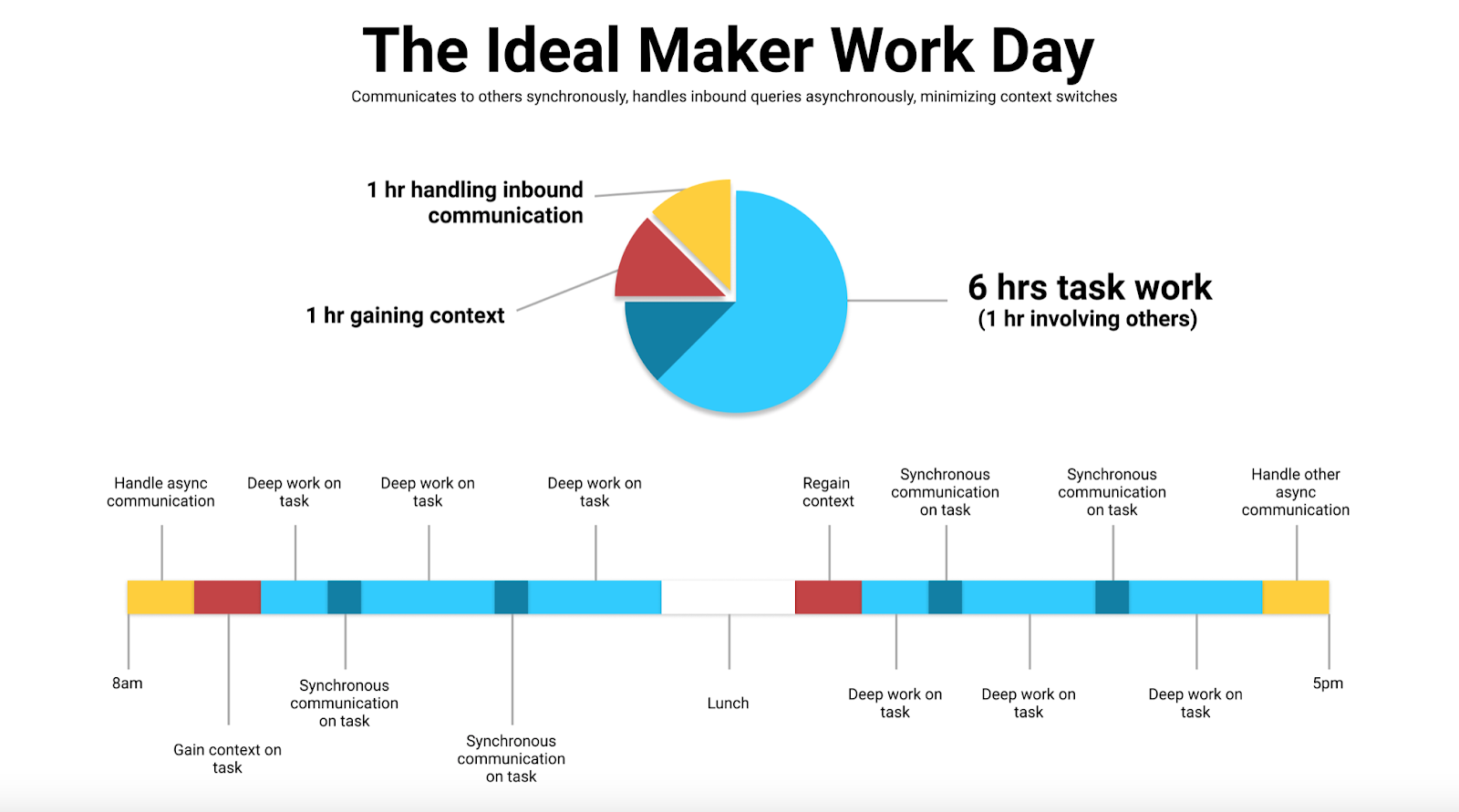
Source: Pragli
It is so tempting to stay longer hours at your home office when working remotely – private and work tasks can lose their borders as you no longer leave your laptop on your office table and have that feeling of leaving work behind the closed office door – till the next day.
That’s definitely up to your team and yourself to choose what time you want to work. However, you should not require your employees to be available after office hours – don’t call or write to them after work just because with remote work the two spheres of our lives frequently mix together. A good strategy would be to let people switch off and lead by example – turn off your devices and start having some time for your personal life.
Even though some would not mind responding to their boss at any time, in general, this is not good for the wellbeing of your employees, as in the long run, they can start feeling more pressure and the fear of missing out can intensify.
Set clear expectations about out-of-work hours and ask your team to snooze notifications and not bother to respond when they are having time off.
Explaining your next quarter plans to your team in the office is much easier compared to a remote setting – you can reach out for a pen and draw something or show the process on a whiteboard.
However, with the technology tools that help visualize processes online, you can now move conference room meetings online.
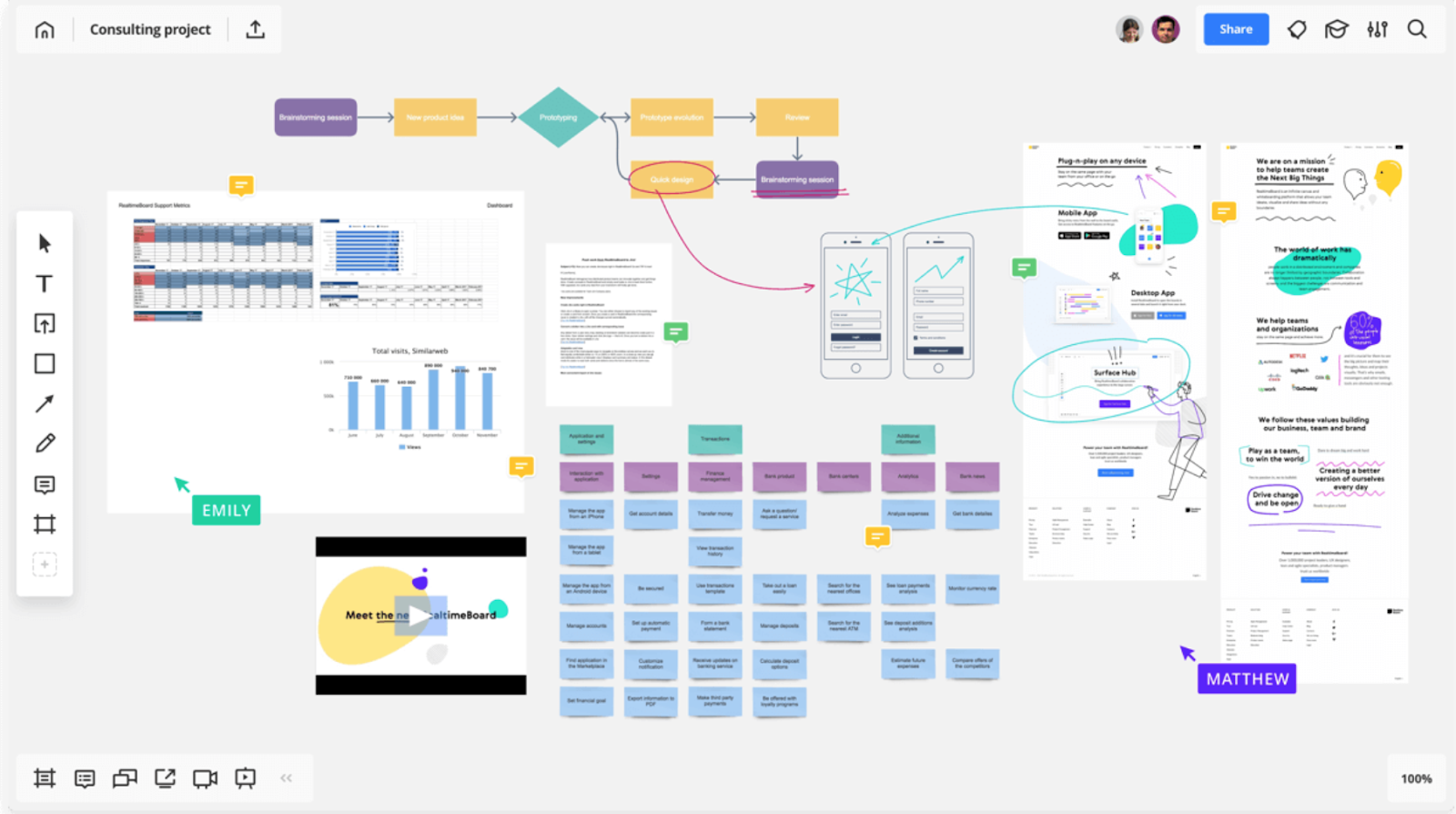
Source: Branchspace
There are a couple of visualization tools that you can use to show processes fast, write on virtual post-its, and draw. Here are just some of them.
Fast-growing companies that used to hire office employees, will have to perform remote hiring and onboarding more often. Remote onboarding requires more documentation and better communication with new hires – what could previously be explained in words in the office, now requires to be “hyperlinked” in an onboarding document.
That is why you have to modify your current onboarding plan to make your new hires comfortable when exploring the specifics of your company’s business.
You can start with the onboarding process visualization to make sure all organizational aspects of getting your hires onboard are accounted for.
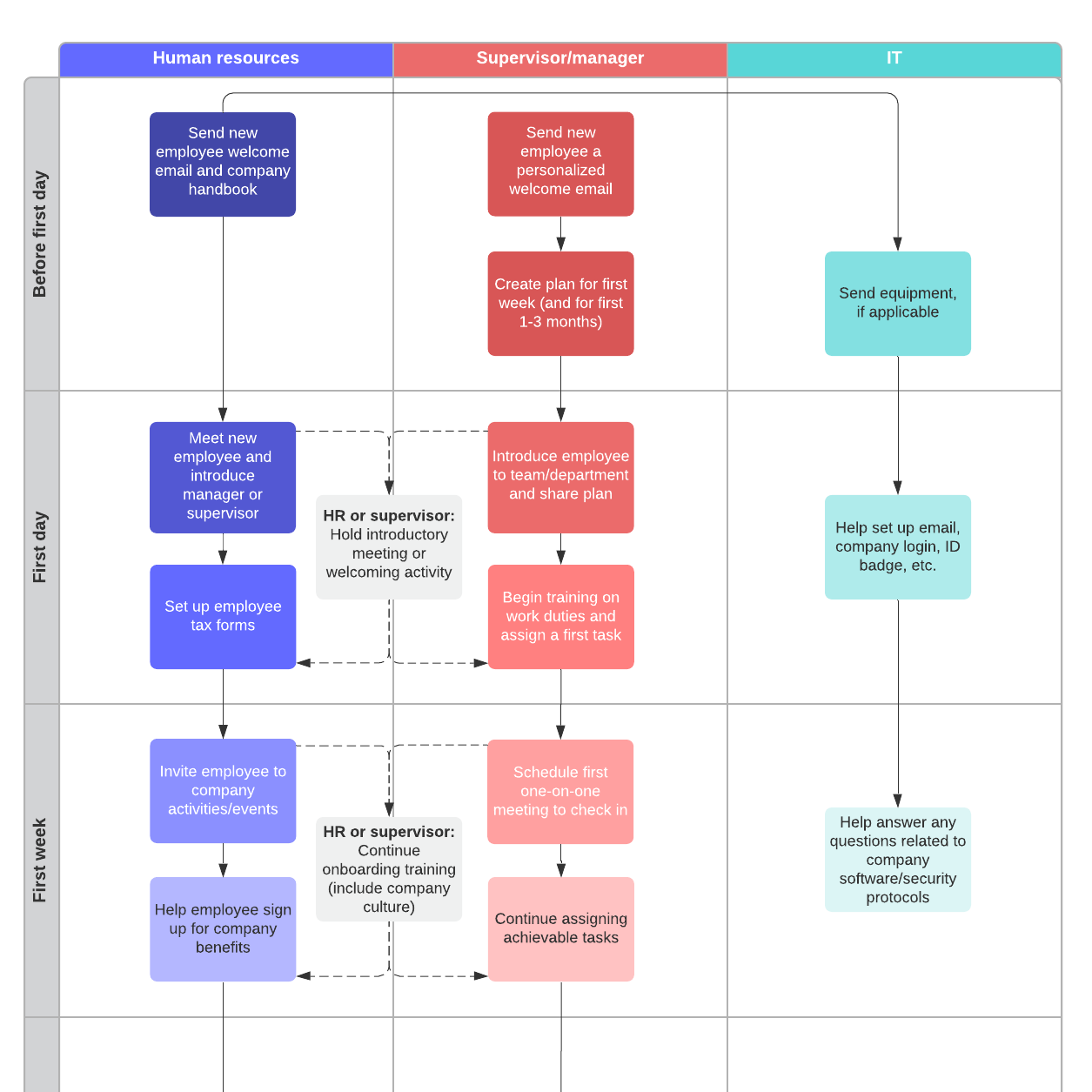
Source: LucidChart
Here are some of the ideas you can incorporate in your remote onboarding process.
When working remotely, especially asynchronously, your team needs to make many decisions on their own. Otherwise, as a leader and decision-maker, you will get swamped with requests for a “second-opinion” or questions on what to do next.
This phenomenon in team management is called a monkey problem. When your colleagues are approaching you with various problems to solve, you can either take them up and start dealing with them or give your team the freedom to find a solution on their own.
In the former scenario, too many “monkeys” will burden your schedule. In the latter, each member of your team will take ownership and find an appropriate solution – all monkeys will stay with their owners who will take proper care of them.
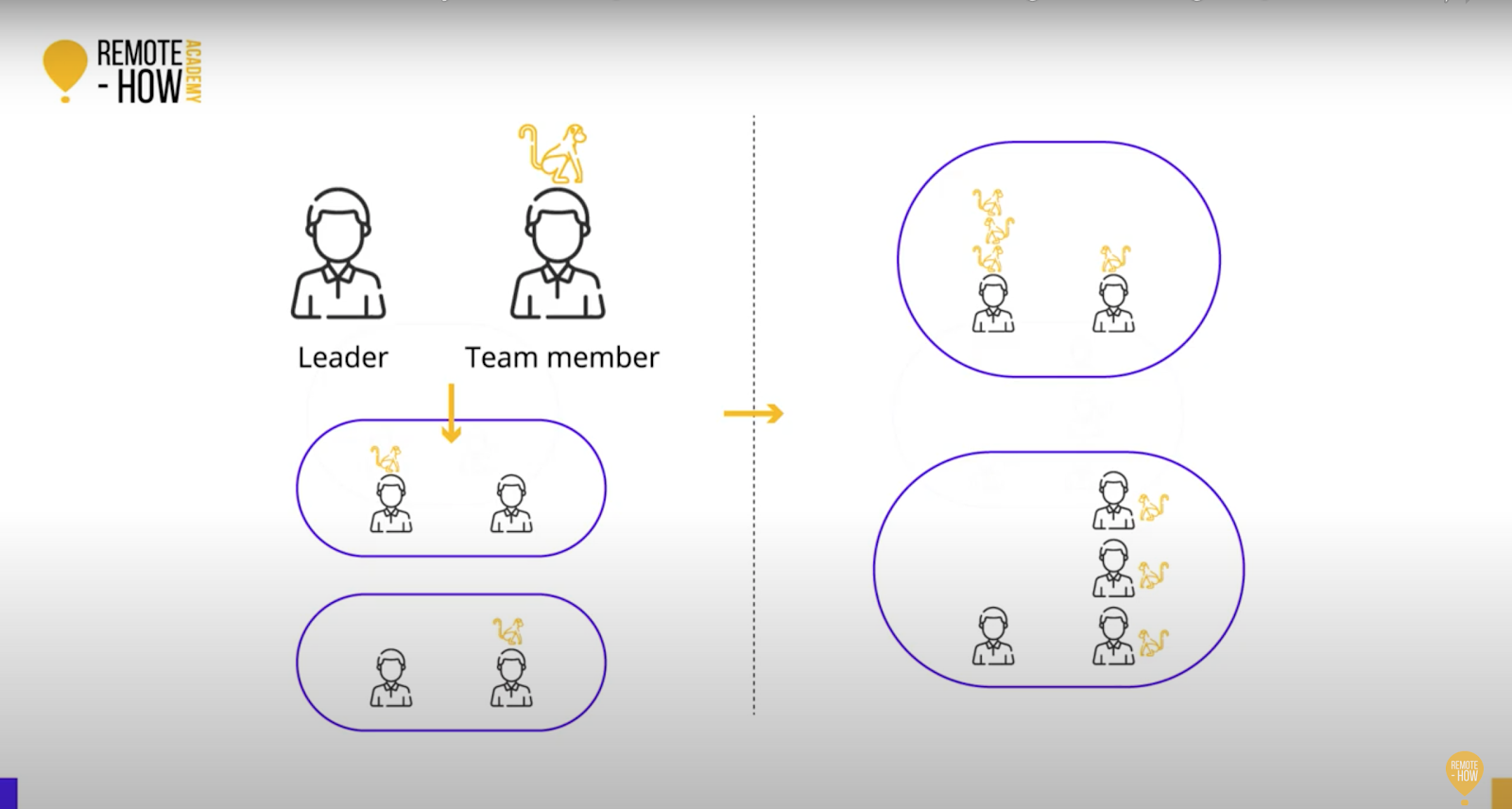
Source: YouTube
Instead of jumping on each issue your team members have, let them resolve it. Of course, you can say it is easier said than done. Also, it takes time to get used to delegating tasks as much as possible.
There is also a lot to it in your mental approach to delegation – you can let your team sort out an issue or believe that you are the only person who can effectively deal with it.
However, in most cases, your team can handle it without your engagement.
Fridays are the time to draw the line on the past week achievements and set up more ambitious tasks for the upcoming week. When working remotely, getting your team to reflect on their past week and think a bit about the week to come is equally important to make sure all tasks are set up in a backlog. Moreover, when there is a fun element to an end-of-week meeting, your team will feel more relaxed and integrated while not being physically present in a room.
For example, in Zapier, a remote-first company, employees do Friday updates on achieving last week’s priorities and setting up next week’s ones. There are many ways you can encourage your team to share their weekly progress – on an internal blog, Slack channel, or even Google Docs.
Hearing about each other’s achievements gives motivation and keeps people accountable, as well as simply finding out what other colleagues have done so far and how they can work better together.
Friday catch-ups should not be all about work though. Why not grab a cuppa tea or beer and relax?

Source: Torani
Apart from setting up more ambitious goals for the next week, you should also consider integrating some fun elements like talking about weekend plans or hobbies. The call closing the past week should not be connected to assessing your team performance, but a way to draw a line, and most importantly, set up a positive tone for the weekend time and a new week ahead.
That is why jumping on a Friday call with a pet and a cup of hot chocolate is not that bad idea at all!
When working from a physical location, you could offer your employees some benefits they could use in your city such as medical insurance and gym membership, or even coffee vouchers or cinema tickets.
With some cities on full lockdown, your employees can no longer use their usual benefits which are always a nice bonus and a sign of appreciation from the company.
Instead of cutting on benefits, show some creativity and impress your team with new remote benefits. This will show you care more about your team in these hard times and account for newly-appeared needs. Also, introducing these benefits helps your company get a competitive advantage on the job market and stand out from the companies that expect only “hard work” from their candidates and offer no rewards.
So what would be a good idea for a remote benefit? Let’s check out!
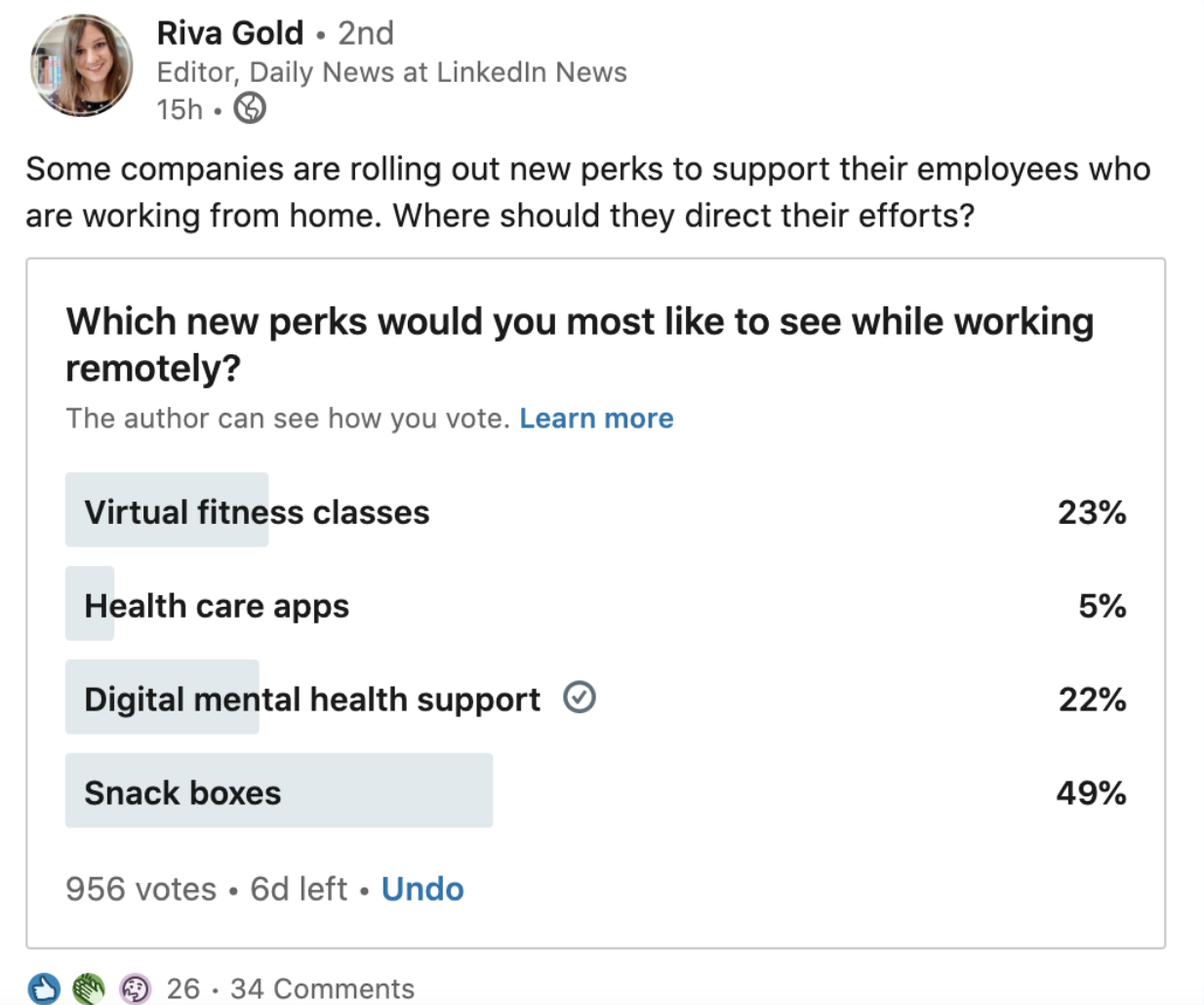
Source: LinkedIn
Here are just some:
While people tend to socialize at the water cooler or kitchen making coffee, these casual talks result in more informal conversations and help people learn about each other on a personal level.
Under new circumstances having this experience is not possible when working remotely. As a result, people feel a bit tenser, can no longer have informal chats, and create a positive atmosphere before each conference meeting.
However, as a team leader, you can facilitate your teams’ informal interactions and move water coolers to the online environment.
You can use virtual icebreakers to warm up the atmosphere before each call and aim to learn about your team on a more personal level.
Let’s face it – life is not all about work! That is why you have to dedicate a couple of minutes to some casual talks and ask informal questions – don’t be shy to ask about your colleague’s pets or current activities or at least comment on their new background on Zoom calls.
You can also integrate some engaging polls for your employees for more informal meetings – such as Friday virtual coffee or beer catch-ups. Use tools such as Kahoot! or Donut for this.
Here is how Kahoot! activities can look like in action.
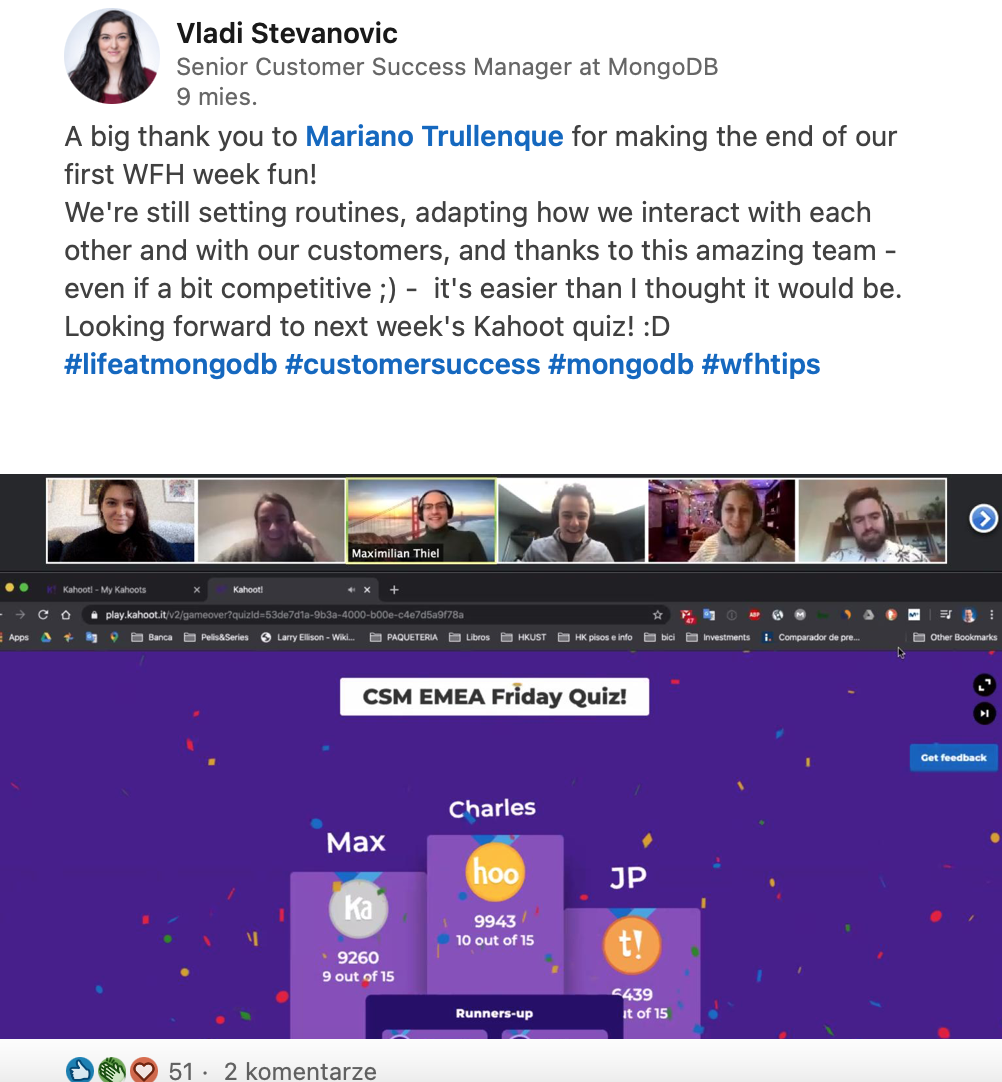
Source: LinkedIn
It is much easier to lose motivation when getting no signs of appreciation for the little things. When working in a remote environment, people also tend to interpret neutral signs as more negative.
Having different communication styles, some people would go for the funny emojis and remember to thank for the help, while others will keep their sentences grammatically correct and neutral rather than positive and fun. Remote communication tools can even take people’s personalities away – we can no longer see someone else’s gestures and facial expressions to understand intentions and emotions.
To alleviate the impersonality of remote work tools, consider incorporating the gratitude culture in the remote environment and get people to thank each other’s contributions more often. For this, you can create a separate Slack channel and set the right expectations about using it.
Also, make it your own habit to thank your team for the little and big things they achieve while working remotely.
Work will never stay the same when companies get a chance to move back to their physical offices – some will continue working in a hybrid setting, while others will adopt a remote-first culture.
In any case, more employees who have started noticing the benefits of remote work will expect companies to offer work-from-home days, remote work perks, and use remote communication and collaboration tools. Some will even want employees to accept the fact, they will want to choose a new city for remote work every few months.
As a leader, you need to acquire new skills and implement remote work strategies that will make both hybrid and remote teams perform better. This way your company will stay competitive in the job market and attract one of the best candidates.
I hope that the tips from this article will help you out in the process of becoming a top leader who can easily adapt and keep their team productive under any circumstances in 2021 and beyond.
Cover photo by Gabriel Benois on Unsplash
Be prepared for the next project status meeting with your client: this easy project meeting checklist will save you time.
If you hate unproductive meetings and awkward moments of silence during conference call, these 6 tips will help you lead virtual meetings productively
The Timeneye extension for Google Chrome has been completely redesigned, plus we added the possibility to create projects and phases